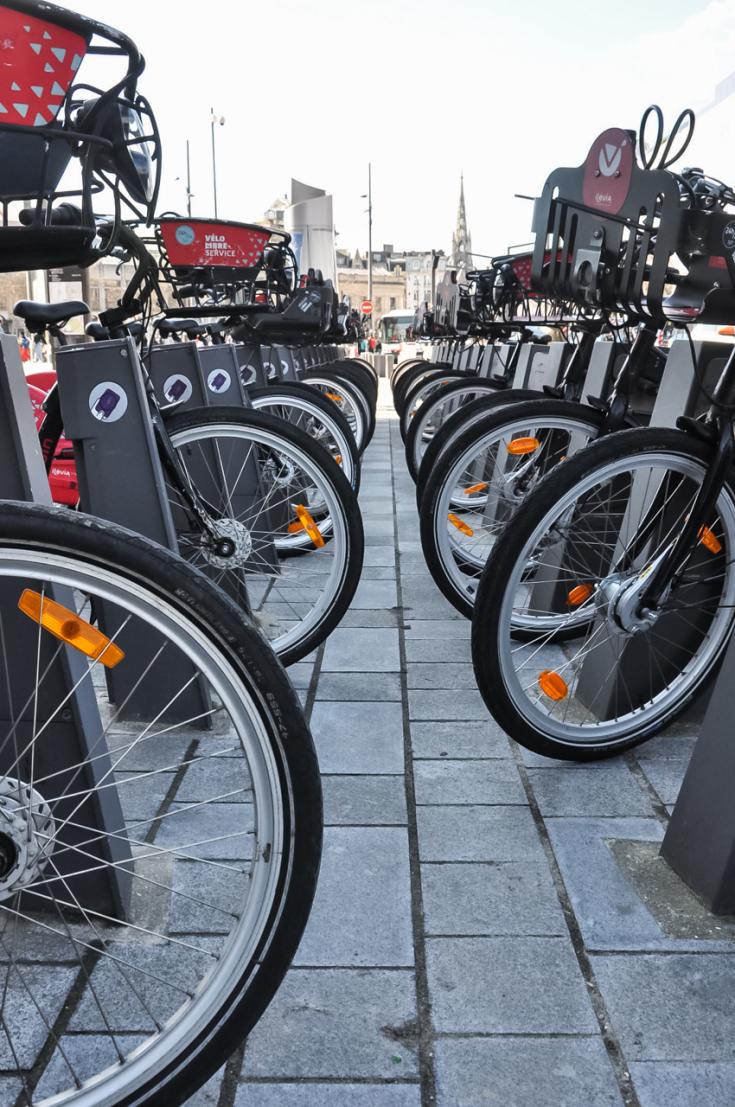Specifications for shared, cycling and public realm surfaces

During the webinar on infrastructure development for cycling the Policy Learning Platform received a question concerning resources with recommended specifications for shared, cycling and public realm surfaces as well as guidelines for their installation and maintenance.
Additionally, more information was requested on the Cycle and Ride facilities associated with Luas Light Rail as object of vandalism and anti-social behaviour.
With regard to the first query, Meredith Glaser (Urban Cycling Institute – University of Amsterdam) recommends the Design Manual for Bicycle Traffic of the CROW platform. Additionally, she suggests to explore the Handshake CIVITAS project funded by Horizon 2020. The project website has in fact a rich section on design and layout of physical infrastructures for cycling, which gathers information on solutions implemented by 13 European cities, including Dublin.
Rose Power (Southern Regional Assembly, Ireland) suggests to look also at the information on construction specifications that can be retrieved in a number of policy documents in the area of transport and mobility adopted by the competent Irish national authorities in recent years, such as the 2017 Rural Cycleway Design of Transport Infrastructure Ireland, the 2018 Design Manual for Urban Roads and Streets (DEMURS) and as well as the advice note on materials and specifications issued by the government of Ireland. Find additional information from Ireland on specifications for public realm surfaces.
Isabel Garnika (Environmental Studies Centre of Vitoria-Gasteiz City Council) would advise to consider the relevant information on design and materials to be used for the development of the cycling infrastructure contained in Annex II to the masterplan for cycling mobility being implemented in the City of Vitoria-Gasteiz. This information is available in Spanish.
In reply to the second question, Rose Power specifies that while vandalism and anti-social behaviour are always possible, the Cycle and Ride facilities cannot be easily damaged. The good practice she described in the webinar was in fact implemented in order to respond in the best possible way to the needs expressed by users who, among others, attached a great importance to security. That is why the best design for the bike lockers (and the overall infrastructure) was chosen. Such lockers are made of galvanised steel, they have a 10-year guarantee and an estimated life cycle of 35 years. Technical specifications of these products (warrior bike lockers) can be consulted here.
Explore other relevant information such as Interreg Europe Policy Learning Platform validated good practices on cycling infrastructure development, and to sources of policy information from the knowledge hub of the Policy Learning Platform as well as from the European Commission.
Good practices
- Bicycle infrastructure network in Seville urban Mobility (TRAM project). The Municipality of Seville (Spain) stresses that homogeneity in design and pavement is a key factor for guaranteeing the success of the cycling infrastructure. The installation of adequate road signs and the construction of high-quality parking spaces for bikes are also signalled as equally important elements;
- Guidelines for pedestrian and cycling infrastructure (CYCLEWALK project). This experience from Vilnius (Lithuania) confirms the importance of planning and implementing a durable cycling infrastructure and of agreeing on specific requirements for its construction.
Knowledge hub
- Unlock funds for cycling in your region. This article gives flash information on the resources that have been made available by the EU to support the development of the cycling infrastructure in the context of the new Multiannual Financial Framework adopted for the period 2021-2027 as well as under the Recovery and Resilience Facility. It also includes a link to the country specific guidelines developed by the European Cyclists’ Federation (ECF) for the EU-27. These guidelines contain information that you could find useful, including on additional good practices on infrastructure development for cycling from other EU member states. ECF guidelines for Ireland are available here;
-
. This policy brief explores various initiatives in Interreg Europe and at the European level and could offer you further insights on how to foster urban cycling in your city.Document
European Commission
- The Directorate General for Mobility and Transport (DG MOVE) has gathered information on existing cycle infrastructure quality design standards. The guidelines listed in this webpage come from a variety of EU Member States, including Ireland, as well from Switzerland, the United Kingdom and the United States of America;
- The basic quality design principles for cycle infrastructure and network elaborated by DG MOVE offer interesting information on the safety, attractiveness and comfort of cycling surfaces. Moreover, here you can access 'measure specific guidance' inter alia on cycle streets, multimodal integration and cycle parking as well as b) further references on infrastructural issues, e.g. the 2016 CIVITAS Policy Note on 'Smart choices for cities' (see chapter on 'Infrastructure and equipment' pp. 10-19) and the 2010 PRESTO Policy Guide on 'Cycling infrastructure'.
Are you interested in receiving tailored policy guidance, take a look at the Policy Learning Platform peer review service. The objective of the peer review is to enable policymakers to receive hands-on feedback and advice from peers on a selected policy challenge to tackle, e.g. how to improve the quality of the cycling infrastructure in a given city or region.
Peer reviews target managing authorities of structural funds programmes and local and regional public authorities from all European regions (EU-27, Norway and Switzerland). The Policy Learning Platform identifies suitable experts (peers) from other regions who can support the host region in finding solutions to its policy challenges. The peer review process involves an intensive 2-day peer-to-peer meeting that is normally conducted in the host region seeking advice. Since the beginning of the ongoing public health emergency, peer reviews are being successfully carried out on-line. Apply for your peer review today.